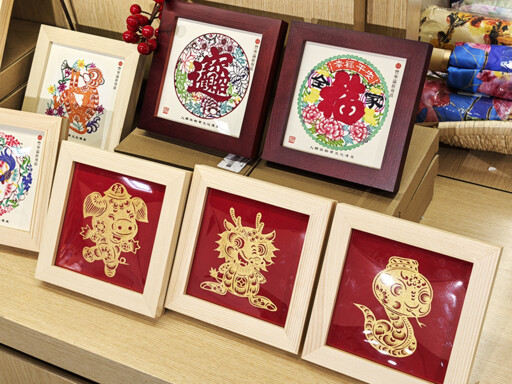


Cultural industry fuels China’s high-quality development

Paper cuttings on display at the Chinese Traditional Culture Museum in Beijing on Dec. 7 Photo: IC PHOTO
At present, the cultural industry has become a strong driver of China’s high-quality economic development, constituting a significant component of the nation’s economy. Centering on the development of the cultural sector in China, CSST recently interviewed two Australian scholars: Hammed Musibau, a research fellow from the School of Economics and Public Policy at the University of Adelaide, and Dijana Alic, an associate professor from the School of Built Environment at the University of New South Wales.
Vigorous development
China plays a central role in international trade, industry, and technology, and now also in art and culture, Musibau told CSST. Since the early 2000s, aware of the potential role of cultural fields for boosting the country’s economic growth and influence around the world, the Chinese government has been supporting the sector through a wide range of policies and massive investments. Meanwhile, a general increase in people’s purchasing power is contributing to the growth of the cultural and entertainment sectors.
In the past, China was on the periphery of the global contemporary art market, but now it is at the center, Musibau continued. He attributed this meteoric rise to a number of factors, including government initiatives that have introduced flexible policies to invigorate the contemporary art market and promote contemporary Chinese art internationally.
In recent years, the Chinese government has also increased financial support for the establishment of public and private contemporary art museums nationwide. “These massive investments have helped to develop cultural infrastructure across the country. Numerous public initiatives aimed at promoting the cultural and creative industries are being carried out at national, regional, or local levels, such as the creation of creative clusters in major cities like Beijing and Shanghai,” Musibau said. “At the heart of megacities with intense economic activity, the aim of these clusters is to bring together players and companies in the creative sector in order to create synergies, stimulate creativity and innovative projects.”
Alic noted that China is exporting an increasing range of cultural products including films, animation, video games, and visual arts, to foreign markets. These exports help to spread Chinese culture around the world, strengthen its influence, and shape a positive image of China.
In addition, China hosts a variety of major international events each year, further solidifying its position in the field of cultural creation, Alic observed. The China Joy (China Digital Entertainment Expo & Conference), for example, which takes place every year in Shanghai and brings together main Chinese and international players in this creative industry, is considered one of the biggest video game trade fairs in Asia. This vast market, with its many players and diverse activities, offers great opportunities for foreign companies, Alic said.
Fusion with technology
Alic emphasized how the application of big data technology in the cultural industry in China has extended its value chain and enriched content, while making the sector more open and dynamic. In the big data era, the cultural industry not only develops rapidly but also actively drives the output value of other traditional industries, promotes the integration of traditional industries and public culture and education, and spurs endogenous economic growth.
As a powerful driving force for the tertiary industry, the cultural industry, with high value added, has attracted significant investment, Alic said. Some internet companies have entered this field through mergers and acquisitions, equity participation, equity investment, and business collaborations, actively participating in the process of cultural creation, such as game production and video dissemination. These trends are propelling cultural development into the fast lane, unleashing unprecedented vitality.
Musibau highlighted that as the economy develops, cultural consumption is becoming increasingly important, with its influence growing ever more apparent. Mobile devices now dominate how people engage with cultural content, reflecting the trend toward fragmented consumption. The integration of internet technology and mobile phones enables individuals to make the most of fragmented moments in their daily lives for cultural engagement.
For cultural enterprises to thrive, they should leverage new technologies to understand and cater to consumer habits, Musibau suggested, adding that precision targeting can create a positive cycle in the cultural market and continuously expand its space.
Editor:Yu Hui
Copyright©2023 CSSN All Rights Reserved